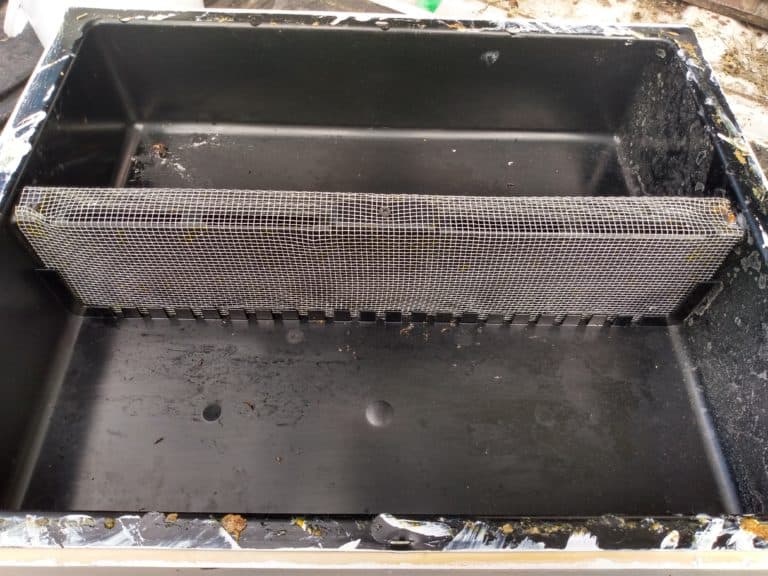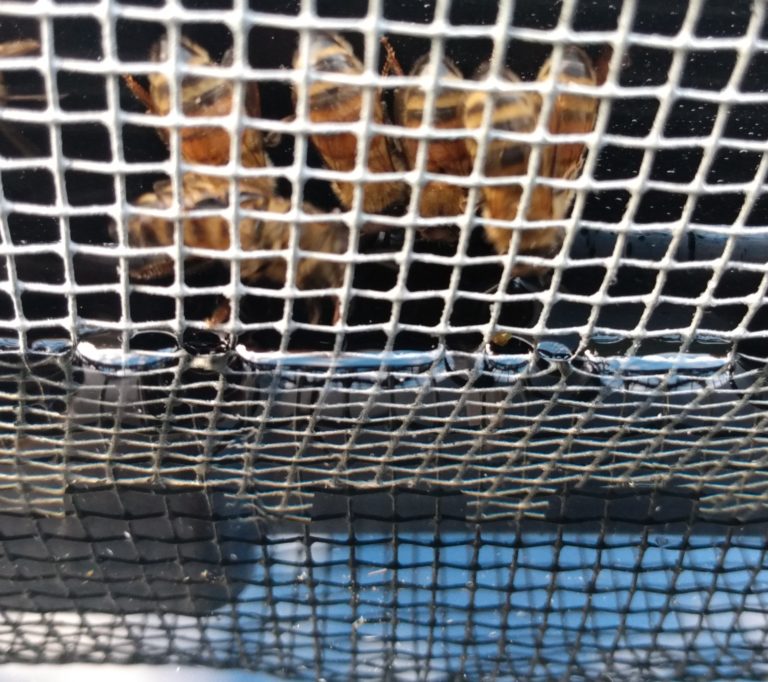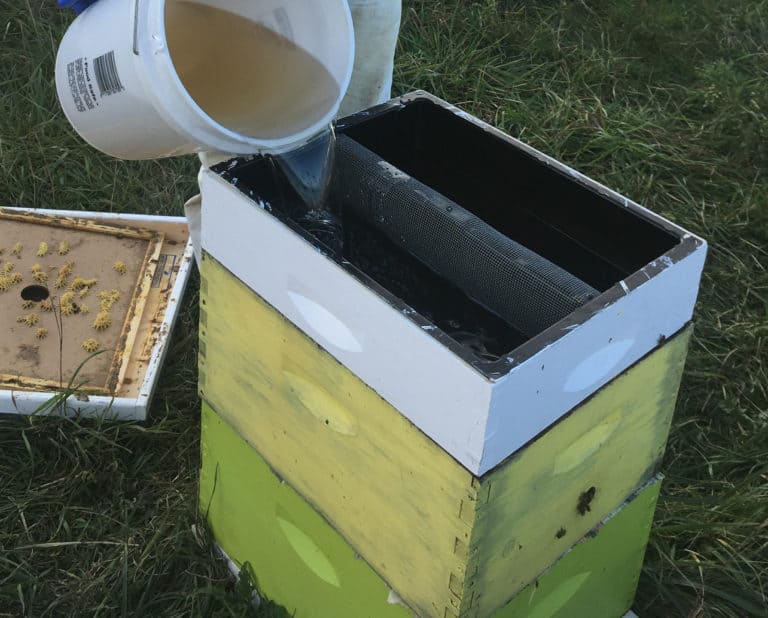How To Use A Top Feeder For Bees
Feeding colonies sugar syrup is something most beekeepers do, generally in the bound and/or fall. The purpose of feeding syrup can exist to stimulate colony growth, sustain them through a dearth period, or build and maintain adequate stores for wintering. There are multiple methods for feeding syrup, each utilizing unlike pieces of equipment and having their own pros and cons. Previous web log posts discuss the use of gravity feeders and frame feeders, which are the two most unremarkably used feeders. A top feeder is a 3rd method for feeding that is also a practiced choice under sure circumstances.
Equally the name suggests, a top feeder is placed on the top of the hive. Designs vary a little, but the bones setup is a shallow box (4"-v" depth) with a plastic reservoir to agree syrup, and hardware cloth to allow bees access to the syrup, while preventing them from drowning. Top feeders come in sizes to fit both eight-frame and x-frame Langstroth equipment. Capacity varies a little between manufacturers, merely ten-frame feeders usually concur about 4 gallons, and 8-frame feeders can agree a trivial more than than 3 gallons.

The height feeder'south loftier capacity is beneficial because it allows a large volume of syrup to exist provided to a colony in a unmarried visit. This may non be equally important to beekeepers with colonies in the lawn who tin can regularly refill their feeders, simply information technology can be a meaning time-saver if apiaries are far away. The large admission expanse the hardware material surface provides enables many bees to take feed at once, and therefore allowing a colony to rapidly swallow a big quantity of syrup. This is peculiarly important during the autumn when there is a narrow window in which to feed in society to assure brood chambers will have adequate stores for wintertime later supers are removed. My experience has been that colonies take syrup from top feeders a fiddling slower than from a frame feeder, merely faster than from a gravity feeder.

The wide, open design of acme feeders allows for quick and easy filling compared to filling gravity or frame feeders, which can reduce the potential for spilled syrup and thus help to forestall robbing. Refilling a top feeder isn't disruptive to the colony, equally information technology only involves removing the chapeau and inner cover to admission the feeder, leaving the bees below undisturbed. When feeding is over for the season, information technology is simple to rinse out the pinnacle feeder's syrup reservoir and allow information technology to dry before stacking for storage. Another nice summit feeder feature is that, different gravity feeders, they are non decumbent to leaking caused by temperature fluctuations or bad seals.

It is important to inspect top feeders before use to ensure the hardware cloth is "bee tight" to preclude admission from below. Endmost any gaps and filling any bee-size holes with silicon volition preclude bee drowning. Information technology is also important that access to the syrup from above is denied, but this is easily accomplished equally long as the inner cover is in good condition and sits flush on top.

Acme feeders similar to the model pictured above range from near $30- $35, simply they can finish up paying for themselves pretty quickly by saving time that would be spent traveling to and from apiaries in club to refill smaller feeders. Like most beekeeping management decisions, the all-time feeder to cull will depend on the individual state of affairs, but having tiptop feeders in your collection of apiculture equipment gives you an extra option.
How To Use A Top Feeder For Bees,
Source: https://beeinformed.org/2021/09/14/feeding-bees-top-feeders/
Posted by: walkerdeboyfaing.blogspot.com


0 Response to "How To Use A Top Feeder For Bees"
Post a Comment